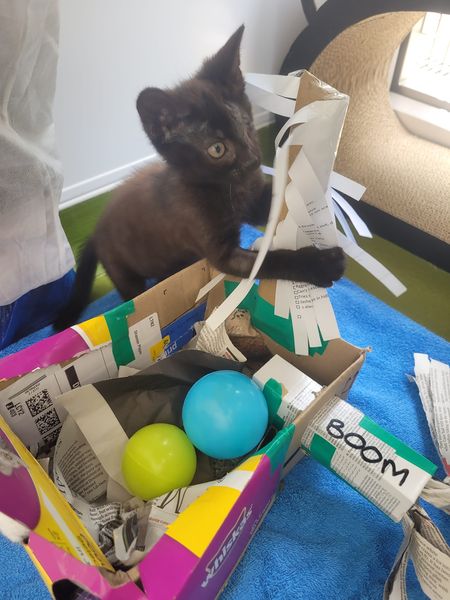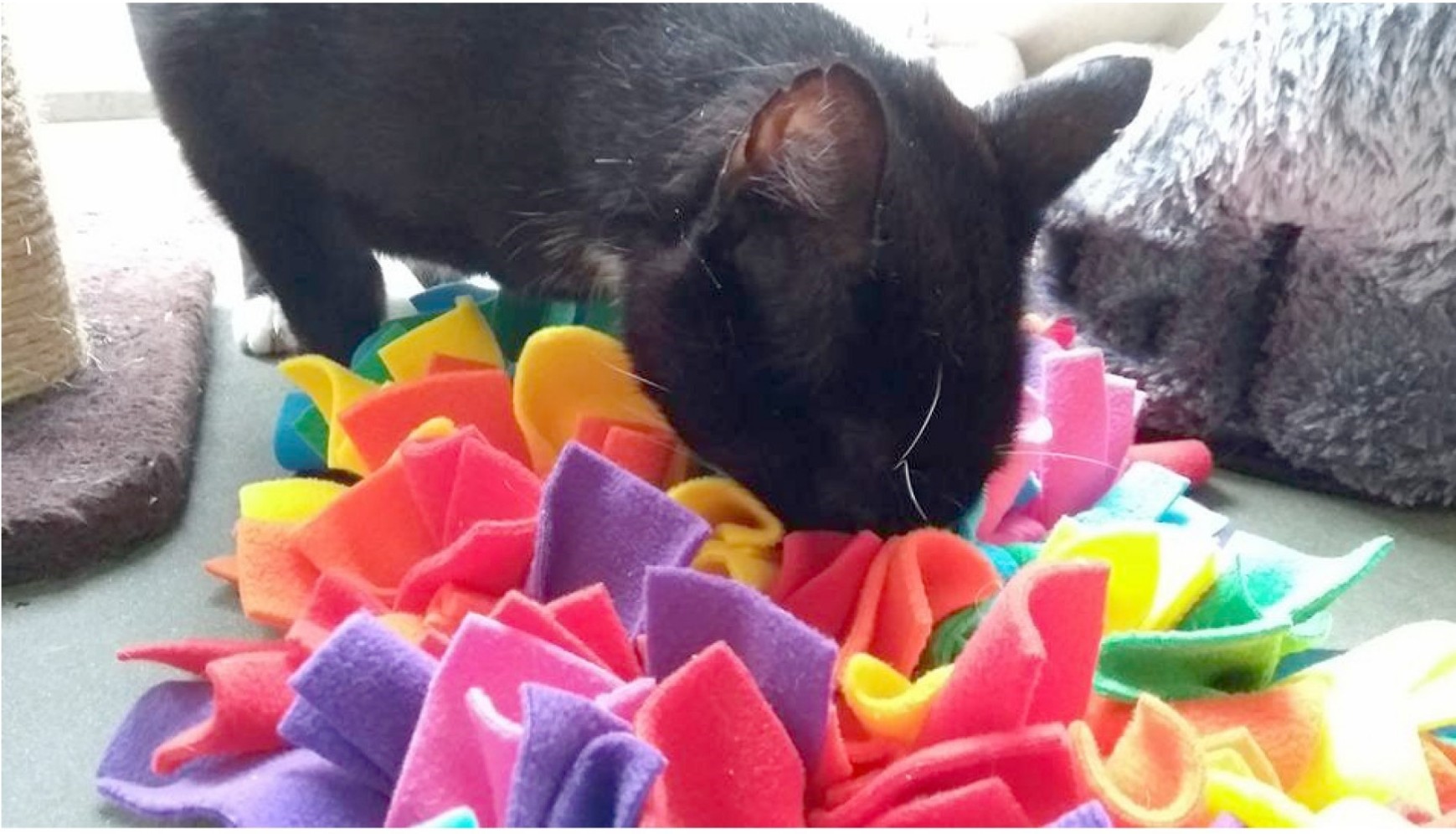Playing with your cat increases your bond, encourages them to stay closer to home, and reduces the urge to kill wildlife outside.
Play is particularly important for indoor cats so they can exhibit natural behaviour. With too little to do, they can develop behaviour problems such as aggression toward the owner, fur pulling, attention seeking, spraying or overeating. These are the visible symptoms of boredom. The less obvious symptom of boredom is lethargy - they stop doing anything much.
A cat needs will work off their predatory instincts in play. A play session should happen at least once every day even if your cat goes outside. Aim for 10 short games or 30 pounces every day for an indoor-only cat.
A signal for stopping play sessions will be useful too. It will allow you to stop games that seem to be getting out of hand.

Toys
Cats don't see the shape or colour of toys as very important. What is important is a range of texture, smell and how they move when played with.
Toys don't have to be expensive! Here's a few ideas, see what entices your cat to play.
• Corks from wine bottles
• Scrunched up paper, crisp packets or kitchen foil balls
• The inside of sellotape rolls
• A dried broad bean on a hard surface
• Newspapers made into a tunnel
• Ping pong balls in the bath or in a paper bag
• Suspend toys from a string
• If you find it difficult to interest your cat, tie pieces of meat on string.
Cats can get 'toy fatigue' and no longer find excitement in familiar toys. Have four boxes of toys and change over to a new box each week - include a mix of textures, scents and movements. A new toy interests a cat more than a familiar toy, and taking a break can help spark interest agin. If not, try spraying with a catnip scent or tie two toys together so they move differently.
How to play
» Download this poster on how to move toys to entice a cat, by Dr Mikel Dalgado and illustrated by Lili Chin (for personal use only).

Boxes
Take a large cardboard box and put in shredded newspaper, newspaper balls etc. into it. In the bottom put some dry food biscuits. Encourage your cat to use it as a place to play. Any time you have an unwanted box put it out for the cat before you recycle it, it doesn't have to be a very big box.
Cut holes into the sides and you can tease toys through the gaps.
Making food into fun
If cats were in the wild they would have to stalk and hunt for food. Emulate this by giving food little and often in different locations around your house. If you feed wet food then hide the food bowl daily so your cat has to hunt for it.
Did you know? Zoo animals often prefer to work for their food and will ignore free food in favour of food they have to hunt for.
Take a toilet roll and make large holes in it, then stop both ends with parcel tape. Put in dry food or high value treats. Teach your cat that if they push it, food falls out. Then make another roll with smaller holes. Once you have taught your cat that they can extract food from a dispenser, you can make more difficult puzzles or buy special activity food balls. If you have a small cat make sure the dispensers are not too heavy. The inside of Kinder Surprise eggs also make good food dispensers!

Herbs and catnip
There's more to life than catnip! Stalks and flowers from your garden can incite play, find out which ones your cat enjoys. Do be cautious about house plants as some are poisonous. Scent from these herbs can be particularly beneficial to indoor cats who wouldn't have the chance to find these in a garden.
• Cat grass
• Catmint
• Chamomile
• Dill
• Lavender
• Lemon grass
• Mint
• Parsley
• Sage
• Thyme
• Valerian
Technology and play
Laser light pens and iPad games for cats are fun, but a cat can become very frustrated since there is nothing physical for it to catch. The chase instinct is never switched off by a 'kill', so to speak. So try to end a laser chase with a thrown treat or toy such as a KONG Kickeroo. Sometimes light chasing may become a behaviour problem in its own right, so do not do too much of this - once a week or so is enough.
Independent play
Automatic toys, for example those which spin balls around a track, are fun but, as with laser pens, cats can get obsessed and frustrated without a final 'kill' to complete the game. Use the games sparingly and provide a treat or toy such as a KONG Kickeroo to finish.
Puzzle boards where food it put into little bowls can be bought or you can make your own. make the holes big enough for your cat's paws.

Buy or make a snuffle mat for hiding treats (above).
Games and tricks
Yes you can teach your cat games and tricks! It provides mental and physical activity and is particularly useful for cats that are frustrated. For further reading try
The Trainable Cat by John Bradshaw and Sarah Ellis
Play with your cat! by Mikel Delgado
This pet care advice is from an original article by cat behaviourist Celia Haddon, with kind permission.